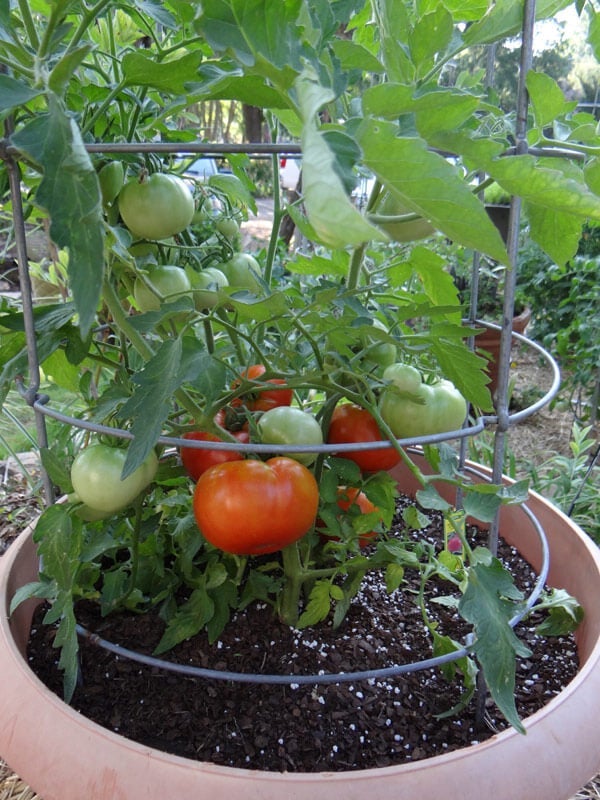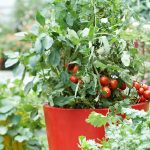Tomato plants should be in full sun for optimal growth and fruit production. In full sun, tomato plants receive the necessary amount of sunlight to photosynthesize and develop healthy leaves, flowers, and fruits.
Role Of Sunlight In Tomato Plant Growth
Tomato plants benefit from sunlight for optimal growth and yield. Full sun exposure provides the necessary light energy for photosynthesis, encouraging strong stem development and fruitful production. It is essential to place tomato plants in a sunny location to ensure their vitality and overall health.
Role of Sunlight in Tomato Plant GrowthIn order for tomato plants to thrive and produce an abundant harvest, providing them with proper sunlight is crucial. Sunlight plays a vital role in the growth and development of tomato plants, and understanding this relationship can greatly benefit gardeners. Let’s explore the significance of sunlight in tomato plant growth under the following subheadings:Photosynthesis And Energy Production
Photosynthesis is the process by which plants convert sunlight into energy, and tomato plants heavily rely on this process for their growth. The leaves of tomato plants contain chlorophyll, the pigment responsible for capturing sunlight. When sunlight hits the leaves, chlorophyll absorbs the energy and triggers a series of chemical reactions, converting carbon dioxide and water into glucose and oxygen. This glucose is then used by the plant as an energy source to fuel its growth and development.Without adequate sunlight, tomato plants would struggle to produce the energy they need to thrive. Insufficient sunlight can result in stunted growth, poor fruit development, and overall weakened plants. By positioning tomato plants in full sun, gardeners can ensure that their plants receive the necessary amount of sunlight to carry out photosynthesis effectively, leading to vigorous growth and an abundant harvest.Development Of Strong Stems And Leaves
In addition to photosynthesis, sunlight also plays a crucial role in the development of strong stems and leaves in tomato plants. Exposure to direct sunlight stimulates the production of a hormone called auxin in the plant’s stem. This hormone is responsible for promoting elongation, which helps the plant grow taller and develop sturdy stems.Furthermore, proper sunlight exposure encourages the development of well-sized and healthy leaves. The leaves of tomato plants serve as the primary site for photosynthesis, so it is essential that they receive sufficient sunlight. When leaves are deprived of sunlight, they may become small, pale, and weak, diminishing the plant’s overall health and productivity.By ensuring that tomato plants are placed in full sun, gardeners can promote the growth of strong stems and leaves. This strengthens the overall structure of the plant, allows for optimal energy production, and ultimately leads to healthier, more productive tomato plants.In conclusion, sunlight plays a pivotal role in the growth and development of tomato plants. Adequate sunlight allows for efficient photosynthesis, enabling the plants to produce energy and thrive. Additionally, proper exposure to sunlight contributes to the development of strong stems and leaves, essential for supporting the plant’s structure and health. By prioritizing full sun for tomato plants, gardeners can ensure optimal growth, leading to bountiful harvests of delicious, homegrown tomatoes.Factors To Consider For Tomato Plant Sun Exposure
Tomatoes are sun-loving plants that thrive in warm, sunny conditions. However, it’s essential to strike a balance when it comes to sun exposure, as both too much and too little sunlight can affect their growth and productivity. In this article, we will explore the optimal amount of sunlight for tomato plants, the potential risks of excessive sun exposure, and the effect of shade on tomato plant growth.
Optimal Amount Of Sunlight
Tomato plants require a significant amount of sunlight to grow and produce abundant fruit. Ideally, they should receive at least six to eight hours of direct sunlight each day. This allows them to photosynthesize efficiently, converting light into energy to fuel their growth and development. When tomato plants receive the optimal amount of sunlight, they tend to be more vigorous, with stronger stems and branches.
To ensure your tomato plants receive adequate sunlight, it’s crucial to choose a suitable location for planting. Ideally, look for a spot in your garden that is unobstructed by tall trees or buildings, ensuring that the plants can bask in the sun for the majority of the day. Moreover, orienting the rows of tomato plants east to west can maximize the exposure to sunlight throughout the day.
Potential Risks Of Excessive Sun Exposure
While tomato plants need a good amount of sunlight, excessive exposure to the sun can also harm them. When tomato plants are exposed to scorching heat and intense sunlight for prolonged periods, they can suffer from sunburn on their leaves, stems, and fruits. Sunburned leaves may develop yellow or white patches, wilting, or even become crispy and dry. Similarly, sunburned fruits can develop pale spots or become discolored, affecting their quality and taste.
To protect your tomato plants from excessive sun exposure, providing adequate shade during the hottest parts of the day is essential. This can be achieved by using shade cloth, umbrellas, or planting taller plants nearby that can provide partial shade. Additionally, regular watering can help cool the plants and mitigate the effects of heat stress.
Effect Of Shade On Tomato Plant Growth
While tomatoes thrive in full sun, they can still grow reasonably well in partially shaded areas. In fact, there are certain scenarios where providing some shade can be beneficial for tomato plant growth. Shade can help reduce the risk of sunburn on sensitive varieties, especially those with lighter-colored foliage. It can also help mitigate the effects of excessively hot climates, preventing heat stress and wilting.
However, it’s important to find the right balance. Tomato plants need enough sunlight to produce energy, so excessive shade can hinder their growth and fruit production. If planting in areas with partial shade, it’s recommended to choose varieties specifically bred for shading conditions or those known for their tolerance to less sunlight.
In conclusion, while tomato plants require a good amount of sunlight, it’s crucial to consider the optimal amount of sun exposure, potential risks of excessive sun exposure, and the potential benefits of shade. By carefully determining the right balance, you can ensure healthy tomato plants that produce bountiful harvests!
Assessing Sun Conditions In Your Garden
Tomato plants thrive in full sun conditions to ensure optimal growth and yield. Assessing sun conditions in your garden will help determine the ideal placement for your tomato plants, ensuring they receive the necessary sunlight for healthy development.
Understanding Sun Patterns And Angles
Assessing the sun conditions in your garden is crucial when it comes to determining the best location for your tomato plants. Sunlight is essential for their growth and ability to produce abundant, flavorful fruits. Understanding the patterns and angles of the sun in your garden will help you make informed decisions about where to plant your tomato seedlings.
When it comes to sunlight, not all parts of your garden are created equal. The amount of direct sunlight your plants receive can vary depending on factors such as the position of nearby trees or buildings, the angle of the sun throughout the day, and the changing seasons. By understanding these sun patterns and angles, you can strategically place your tomato plants in areas that receive the optimal amount of sunlight.
Determining The Best Location For Tomato Plants
Now that you have a solid understanding of sun patterns and angles, it’s time to assess your garden and determine the best location for your tomato plants. Here are some considerations to keep in mind:
1. Choose An Area With Full Sun Exposure
Tomato plants thrive in full sun, which means they need at least six to eight hours of direct sunlight every day. When selecting a location, look for an area in your garden that receives uninterrupted sunlight for the majority of the day. Avoid areas that are shaded by trees or structures, as these can hinder the plant’s ability to produce ripe and juicy tomatoes.
2. Consider The Angle Of The Sun
Understanding the angle at which the sun hits different parts of your garden can help you choose the most suitable spot for your tomato plants. In general, the sun is at its highest point in the sky during midday, casting shadows that are shorter and more concentrated. By observing the length and direction of these shadows throughout the day, you can identify areas that receive the most sunlight and position your tomato plants accordingly.
Additionally, consider the seasonal changes in the sun’s angle. During the summer months, the sun is higher in the sky, providing more direct sunlight. In winter, the sun is lower, and its rays are spread out over a larger area. Adjust the location of your tomato plants accordingly to ensure they receive adequate sunlight throughout the year.
3. Evaluate Potential Obstacles
Take note of any potential obstacles that could obstruct sunlight from reaching your tomato plants. Trees, nearby buildings, or tall fences can cast shadows that might impede the plant’s sun exposure. Consider positioning your tomato plants away from these obstructions to maximize their access to sunlight.
4. Monitor The Microclimate
Every garden has its unique microclimate, which can affect the amount of sunlight your tomato plants receive. Factors like the orientation of your garden, prevailing winds, and nearby water bodies can create microclimates with variations in temperature, humidity, and sunlight availability. Observe these microclimates and choose a location where your tomato plants will thrive based on your specific garden’s conditions.
Conclusion
Assessing sun conditions in your garden is key to ensuring the success of your tomato plants. By understanding the sun patterns and angles, determining the best location for your plants, and evaluating potential obstacles and microclimates, you can create an ideal environment that maximizes the sunlight your tomato plants receive. With ample sunshine, your tomato plants will flourish and reward you with a bountiful harvest of delicious, homegrown tomatoes.

Credit: bonnieplants.com
Maximizing Sunlight For Tomato Plants
When it comes to growing tomato plants, providing them with ample sunlight is crucial for their healthy development and fruitful yield. Tomato plants thrive in sunny conditions, which promote photosynthesis, stimulate strong growth, and enhance the flavor of the harvested fruits. To ensure your tomato plants receive optimal sunlight, various techniques can be employed. This article explores three effective strategies to maximize sunlight for tomato plants: properly spacing tomato plants, using reflective surfaces to redirect sunlight, and implementing pruning and training techniques for better sun exposure.
Properly Spacing Tomato Plants For Optimal Sunlight
Proper spacing is essential when cultivating tomato plants to allow for sufficient airflow and sunlight penetration. To promote optimal sunlight exposure, it is recommended to space your tomato plants approximately two to three feet apart. This spacing not only prevents overcrowding but also facilitates better air circulation, reducing the risk of fungal diseases and helping the plants to dry quickly after rainfall or irrigation.
Using Reflective Surfaces To Redirect Sunlight
Redirecting sunlight can be an effective way to maximize its reach and intensity for your tomato plants. Placing reflective surfaces strategically around your tomato garden can help bounce sunlight back onto the plants, ensuring they receive light from different angles. This method is especially beneficial for areas with limited direct sunlight. Reflective materials such as aluminum foil, white plastic sheets, or reflective mulch can be used to create these surfaces.
Pruning And Training Techniques For Better Sun Exposure
Pruning and training your tomato plants can significantly increase their sun exposure and improve overall plant health. By removing lower branches and foliage, you allow sunlight to penetrate the lower parts of the plant, promoting better air circulation and reducing the risk of disease. Additionally, training tomato plants to grow vertically using stakes or trellises can help expose more leaves and fruits to direct sunlight, resulting in better growth and abundant yields.
Remember, the more sunlight your tomato plants receive, the more energy they can harness through photosynthesis, leading to vigorous growth and delicious tomatoes. By implementing proper spacing, utilizing reflective surfaces, and employing pruning and training techniques, you can maximize sunlight exposure and ensure your tomato plants thrive in full sun.
Protecting Tomato Plants From Harmful Sun
Tomato plants thrive in warm temperatures and bright sunlight, but excessive exposure to the scorching sun can damage their delicate leaves and prevent them from producing juicy, flavorful fruits. Understanding how to protect tomato plants from harmful sun is essential for gardeners who want to ensure a bountiful harvest. In this article, we will explore effective techniques for managing heat stress in tomato plants, providing shade during peak sun hours, and identifying signs of sunburn.
Managing Heat Stress In Tomato Plants
Heat stress can occur when tomato plants are exposed to intense heat for prolonged periods. When temperatures climb above 90°F (32°C), tomato plants may struggle to effectively absorb water and nutrients, resulting in wilting, stunted growth, and reduced fruit production. To prevent heat stress, consider these strategies:
- Watering deeply: Provide tomato plants with ample water to help keep their roots cool. Aim to water the soil around the plants, avoiding direct contact with the leaves and stems. Mulching can also be beneficial in retaining soil moisture.
- Maintaining soil moisture: Check the soil regularly to ensure it stays consistently moist, as dry soil can intensify heat stress. Adjust watering schedules accordingly, especially during hot spells.
- Modifying watering times: In extreme heat, consider watering your tomato plants in the early morning or late evening when temperatures are cooler. This reduces the risk of water evaporating too quickly.
- Applying organic compost: Organic compost helps improve soil structure and moisture retention, reducing the risk of heat stress. Add a layer of compost around the base of the tomato plants.
Providing Shade During Peak Sun Hours
During the hottest hours of the day, providing shade to your tomato plants can shield them from excessive sunlight and prevent sunburn. Here are some effective methods:
- Using shade cloth: Install a shade cloth above your tomato plants to filter and reduce the intensity of sunlight. Make sure it allows some light to penetrate to maintain healthier plant growth.
- Using umbrellas or garden fabric: Erect umbrellas or garden fabric to create temporary shade over individual plants. Ensure proper ventilation to prevent humidity buildup.
- Growing companion plants: Plant taller companion plants, such as sunflowers or corn, to provide natural shade for your tomato plants.
- Utilizing trellises or cages: Construct trellises or cages around your tomato plants to provide partial shade during peak sun hours.
Identifying Signs Of Sunburn In Tomato Plants
Despite your precautions, it’s important to monitor your tomato plants for signs of sunburn. Prompt identification can help you take remedial action. Here are some signs to watch for:
| Signs of Sunburn | Description |
|---|---|
| Leaf discoloration | Leaves may turn pale or develop brown spots, particularly on the side facing the sun. |
| Wilting | Excessive sun exposure can cause leaves to wilt and droop, even if the soil is adequately moist. |
| Fruit damage | Tomato fruit may exhibit scalding or uneven ripening. Sunburned areas may turn leathery or develop patches of brown, affecting their taste. |
| Stunted growth | Consistent exposure to intense sunlight can hamper overall plant growth and productivity. |
Should you notice any of these signs, take immediate action to protect your tomato plants. Consider relocating potted plants to a shadier spot or provide additional shade using the methods mentioned earlier.
Frequently Asked Questions For Should Tomato Plants Be In Full Sun
Can Tomato Plants Tolerate Full Sun All Day Long?
Yes, tomato plants thrive in full sun as they need at least 6 to 8 hours of direct sunlight daily for optimal growth and fruit production. However, in extremely hot climates, they may benefit from some afternoon shade to prevent heat stress.
How Does Sunlight Affect Tomato Plant Growth?
Sunlight is crucial for tomato plant growth as it enables photosynthesis, the process by which plants convert sunlight into energy. Adequate sunlight promotes leafy growth, strengthens stems, and enhances fruit production. Insufficient sunlight can result in weak plants, poor fruit development, and increased vulnerability to diseases.
What Are The Benefits Of Growing Tomato Plants In Full Sun?
Growing tomato plants in full sun has several benefits. It provides ample sunlight for photosynthesis, leading to robust plant growth and increased fruit yield. Full sun also helps in reducing the risk of diseases by allowing foliage to dry quickly.
Additionally, sunlight enhances the flavor and quality of tomatoes, resulting in tastier harvests.
Conclusion
Proper sunlight is essential for tomato plants to thrive and produce high-quality fruits. While full sun exposure is generally beneficial, some factors like extreme heat and sunburn can be detrimental. It is crucial to provide adequate shade and protection during hot summer months.
Monitoring your tomato plants’ sunlight requirements and providing necessary care will ultimately lead to a successful harvest. Remember to strike a balance between sun exposure and protection for optimal tomato plant growth.

I am a graduate of Bangladesh Agricultural University, where I delved into various agricultural disciplines, equipping me with a profound understanding of agriculture. Beyond academics, I have hands-on experience in gardening and crop cultivation. My passion is to embrace sustainable farming and horticulture. With a BSc in Agriculture, I am dedicated to promoting environmentally conscious and efficient agrarian practices.
Bachelor of Science (BSc) in Agriculture (Hons.)
Master of Science. (Sustainable Agriculture & Food Security ) (MS)
Bangladesh Agricultural University




